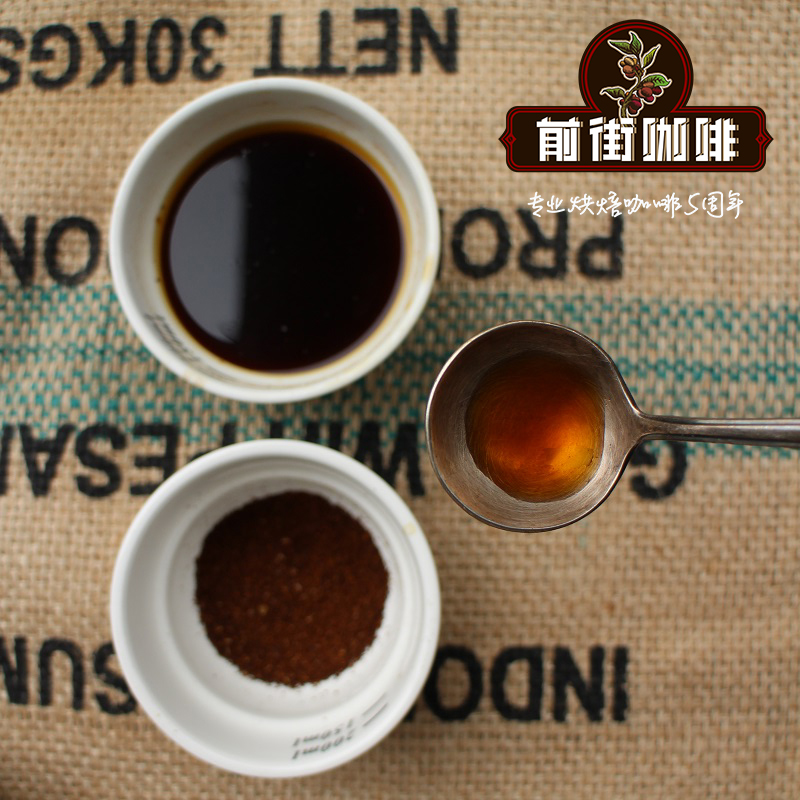The Story of Fine Coffee beans in the World Flower God of Flower beans in Guatemala

Professional coffee knowledge exchange more coffee bean information please follow the coffee workshop (Wechat official account cafe_style)
Bella Carmona Antigua comes from a single farm in the traditional Mala Antigua region. The village is surrounded by Agua, Fuego and Acatenango volcanoes. These three volcanoes provide the ideal climate and conditions for growing perfect coffee. Although the heat is high during the day in this area, the high temperature is completely eliminated by cool and dry nights at night.
The coffee here is grown on Hacienda Carmona. The farm is located on the slope south of the volcano Agua, with a height between 5200 and 6000 feet above sea level. And coffee trees are planted directly in the shade so that coffee trees can absorb proper sunlight. The average rainfall here is between 1800mm and 2300mm. Coffee is also grown in the most traditional way. The main varieties are Bourbon, Typica and Caturra.
The owner of the farm is owned by the Zelaya family and has been operating for four generations. Bella Carmona is a trademark that has won several awards throughout the history of coffee. The earliest one can be traced back to the 1935 National Exhibition in Guatemala. The Zelaya family has always attached great importance to coffee quality. From the cultivation of coffee to the process of processing, there is quite strict management. In addition, the Zelaya family also attaches great importance to the maintenance of environmental ecology. All coffee plantations or processing plants are designed with environmental protection in mind.
In the processing of coffee beans, after the mucous membrane of the coffee is removed, fermented and cleaned, the coffee will be sent to the sun to dry, and the linen agent will not be carefully collected until it is most suitable for moisture. After a certain period of ripening, the parchment will be removed before it is exported. Such a management style is now coupled with environmental and climatic factors to make it have rich body, significant sour taste and clean chocolate aroma.
Important Notice :
前街咖啡 FrontStreet Coffee has moved to new addredd:
FrontStreet Coffee Address: 315,Donghua East Road,GuangZhou
Tel:020 38364473
- Prev

Boutique Coffee World do you know anything about Guatemala's boutique coffee beans Antigua?
Professional coffee knowledge exchange more information about coffee beans Please follow the Coffee Workshop (official Wechat account cafe_style). Although the country is small, it has the most diverse climate in the world. There are enough changes in soil, rainfall, humidity, altitude and temperature to produce seven different types of Guatemalan Arabica coffee. Antigua is an internationally renowned high-quality coffee.
- Next

A brief Analysis of the boutique Coffee Bean Manor in El Salvador
Professional coffee knowledge exchange more coffee bean information please follow the coffee workshop (Wechat official account cafe_style) country: El Salvador production area: Charat Nan Guo Grade: SHG treatment: black honey treatment altitude: 1400-1500m varieties: Pacas Pacas 2015 COE 12th 2014 COE 4th 2013 COE 4th active volcanic activity brought to the country
Related
- Detailed explanation of Jadeite planting Land in Panamanian Jadeite Manor introduction to the grading system of Jadeite competitive bidding, Red bid, Green bid and Rose Summer
- Story of Coffee planting in Brenka region of Costa Rica Stonehenge Manor anaerobic heavy honey treatment of flavor mouth
- What's on the barrel of Blue Mountain Coffee beans?
- Can American coffee also pull flowers? How to use hot American style to pull out a good-looking pattern?
- Can you make a cold extract with coffee beans? What is the right proportion for cold-extracted coffee formula?
- Indonesian PWN Gold Mandrine Coffee Origin Features Flavor How to Chong? Mandolin coffee is American.
- A brief introduction to the flavor characteristics of Brazilian yellow bourbon coffee beans
- What is the effect of different water quality on the flavor of cold-extracted coffee? What kind of water is best for brewing coffee?
- Why do you think of Rose Summer whenever you mention Panamanian coffee?
- Introduction to the characteristics of authentic blue mountain coffee bean producing areas? What is the CIB Coffee Authority in Jamaica?

